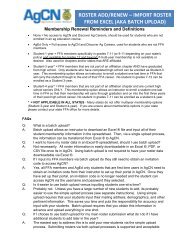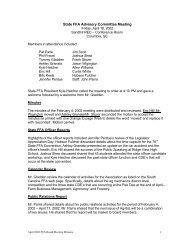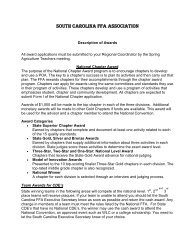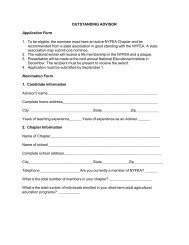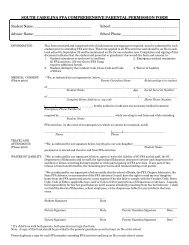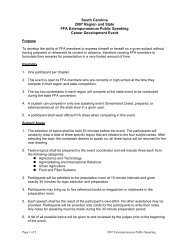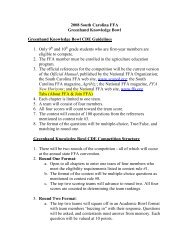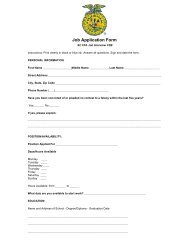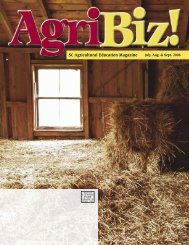DHI-202 Herd Summary
DHI-202 Herd Summary
DHI-202 Herd Summary
You also want an ePaper? Increase the reach of your titles
YUMPU automatically turns print PDFs into web optimized ePapers that Google loves.
6<br />
2b. ROLLING YEARLY - Production<br />
The number of cow-days in a test interval is the<br />
accumulation of the number of days that each cow was in<br />
the herd during the test interval. Suppose there was a 30-<br />
day test interval with 100 cows (milking and dry) in the<br />
herd on the current test day. No cows entered or left the<br />
herd during the test interval. Total cow-days for the interval<br />
were 30 days x 100 cows = 3,000 cow-days. As another<br />
example, assume that 99 cows were in the herd on test day.<br />
One cow left the herd 5 days into the test interval and one<br />
cow entered the herd 15 days before the current test day.<br />
The test interval was 32 days. Total cow-days for the test<br />
interval were (98 cows x 32 days) + (1 cow x 5 days) + (1<br />
cow x 15 days) = 3,165 cow-days.<br />
To calculate RHA, total yearly milk production for the<br />
herd and total cow-days for the year are needed. These are<br />
accumulated by test intervals to obtain a production year of<br />
365 days. For the oldest test interval which spans the 365<br />
day period, the portion is used which accumulates exactly<br />
365 days of production. For example, if the old test interval<br />
was 30 days and the addition of this interval made a total of<br />
370 days, production for 25 days of this period would be<br />
added to the yearly total. For a new herd, RHA will be<br />
calculated after the herd has been enrolled in the <strong>DHI</strong><br />
program for 365 days. When the total yearly production and<br />
2a 2b<br />
total cow-days for the year are obtained, total yearly production is divided by total yearly cow-days to<br />
yield the average daily production for all cows during the past production year. This average daily<br />
production is multiplied by 365 to get the RHA.<br />
No adjustments are made for age, stage of lactation, number of dry cows, or length of the dry period.<br />
Consequently, extended records and long dry periods will reduce RHA for milk production.<br />
Current Daily Average per Cow on Test Day values compared to averages for the test period dropped<br />
(same month of the previous year) may or may not give an indication of the change in RHA from one<br />
month to the next. Average production of all cows during the entire test interval is the information used in<br />
calculating RHA, not average test day production only. Consequently, when a large number of cows are<br />
dry for most of the test interval but calve in time to be tested, an increase in average daily production per<br />
cow on test day may be a misleading indicator of the RHA change. The Test Period Production Added and<br />
Dropped is printed with the Yearly Production and Mastitis <strong>Summary</strong>. This information should be used<br />
to evaluate changes in RHA.<br />
ROLLING YEARLY Average Production<br />
Total Cows is calculated as total cow days for the “production year” (total of consecutive test intervals<br />
comprising approximately 365 days) divided by the sum of all days in the test intervals included in the<br />
“production year”.<br />
Fat Percent on a yearly basis is calculated as (RHA fat divided by RHA milk) x 100.<br />
Example: (804/20946) x 100 = 3.8%<br />
Protein Percent on a yearly basis is calculated as (RHA protein divided by RHA milk) x 100<br />
Example: (659/20946) x 100 = 3.1%



